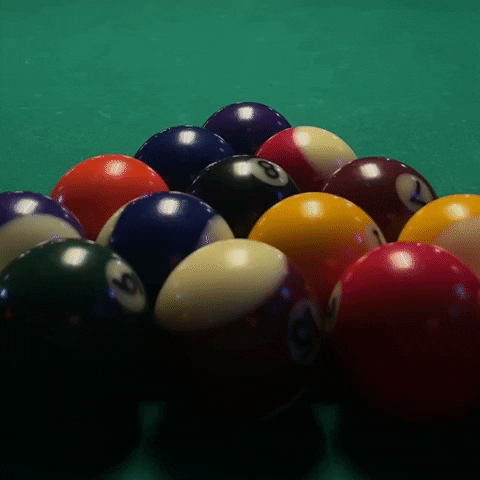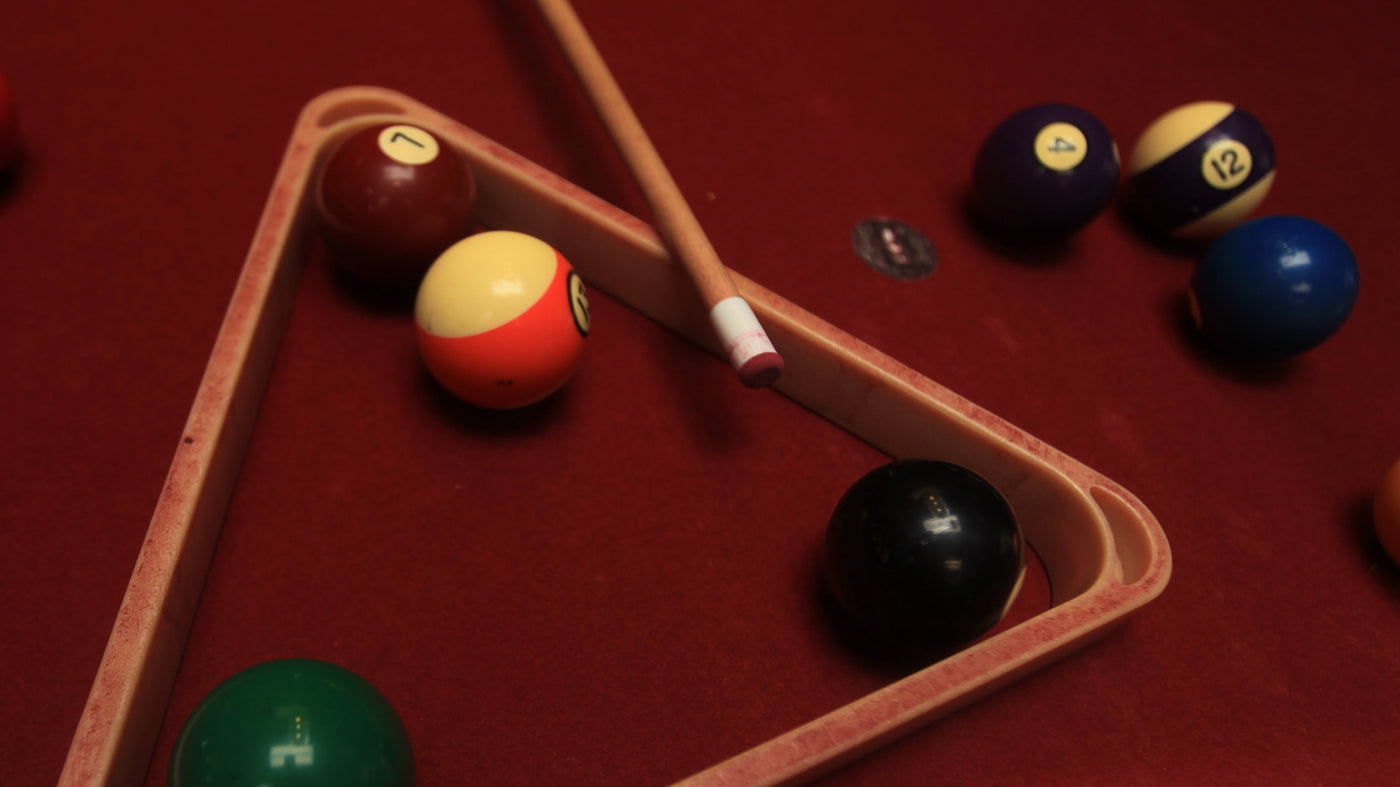Get ready to revolutionize your pool game with our comprehensive guide on mastering opening break strategies. Whether you're a seasoned player or just starting out, the opening break can make or break your chances of victory. In this article, we'll dive deep into the art of the opening break, uncovering the secrets behind a successful start and revealing the strategies used by the pros. We'll perfect your grip and stance, analyze the table layout, and equip you to dominate the game. You'll have all the tools you need for success from your very first shot. But it's not just about brute force. We'll also explore the delicate balance between power and finesse, helping you achieve optimal control over the cue ball. Ready to elevate your pool skills? So, join us to unleash opening break strategies in pool, leaving opponents awestruck.
Outline of the Article
- The importance of opening break strategies in pool
- Understanding the rules and mechanics of the opening break
- Common mistakes to avoid during the opening break
- Analyzing the table layout and planning your opening break
- Different types of opening break strategies
- Mastering the soft break technique
- Advanced opening break strategies for experienced players
- Practicing and refining your opening break skills
- The psychological aspect of the opening break
- Conclusion
- Frequently Asked Questions (FAQs)
The Importance of Opening Break Strategies in Pool
The opening break in pool is more than just a way to start the game. It sets the tone for the entire match and can give you a significant advantage over your opponent. A successful opening break can lead to a clear shot on the object ball. On the contrary, a poorly executed one can leave you in a tough position right from the start. By developing a solid opening break strategy, you can increase your chances of pocketing balls and gaining game control.
To understand the importance of opening break strategies, let's analyze the dynamics of a pool game. The goal is to pocket all of your designated balls (stripes or solids) and then sink the 8-ball to win. If you fail to pocket a ball on the break, your opponent gets the advantage of an open table. This means they can choose to pocket any ball, gaining a head start in their quest to sink the 8-ball.
Understanding the Rules and Mechanics of the Opening Break
Before exploring the strategies, it's crucial to have a solid understanding of the rules and mechanics of the opening break. In most pool games, players take the break shot from behind the headstring. And the cue ball must strike the rack of balls with enough force to scatter them. The goal is to create separation between the balls and potentially pocket one or more balls on the break.
To achieve a successful break, you need to have a good grip and a solid stance. The grip should be firm but not too tight, allowing you to maintain control over the cue ball. Your stance should be balanced, with your body aligned with the shot. This will ensure a smooth stroke and accurate delivery of power to the cue ball.
Common Mistakes to Avoid During the Opening Break
Even with a good understanding of the rules and mechanics, players often make common mistakes during the opening break that can hinder their chances of success. One of the most common mistakes is hitting the cue ball too hard. While power is important, an overly forceful break can result in an uncontrolled scatter of balls. This will be making it difficult to have a clear shot on the object ball.
Another mistake to avoid is improper ball placement on the rack. The balls should be tightly packed, with the 1-ball positioned at the front and the 8-ball at the center. This arrangement maximizes the chances of pocketing a ball on the break and sets up potential combinations or a run-out.
Additionally, scratching on the break is another costly mistake. Scratching occurs when the cue ball is pocketed after striking the rack. This gives your opponent the advantage of an open table and can be a significant setback in your quest for victory. To avoid scratching, focus on controlling the cue ball's trajectory and aim to keep it in the center of the table.
Analyzing the Table Layout and Planning Your Opening Break
Before executing your opening break, take a moment to analyze the table layout and plan your strategy accordingly. Look for any clusters or balls that are blocking each other, as well as any potential combinations or carom shots. By identifying these opportunities, you can adjust your break strategy to maximize your chances of pocketing a ball and gaining control of the table.
Pay close attention to the position of the 8-ball as well. If it is positioned near a pocket, you may want to prioritize pocketing balls that can lead to a clear shot on the 8-ball. On the other hand, if the 8-ball is in a challenging position, focus on pocketing balls and creating favorable positions for future shots.
Calculating angles is another crucial aspect of planning your opening break. By understanding the angles at which the balls are likely to scatter, you can anticipate where they will end up and adjust your strategy accordingly. This will enable you to position the cue ball for your next shot and maintain control of the table.
Different Types of Opening Break Strategies
There are several different opening break strategies that can be employed depending on the situation and personal preference. Let's explore some of the most common ones:
- **Head-On Break**: This strategy involves aiming the cue ball directly at the head ball, with the goal of creating a powerful break and scattering the balls as much as possible. It requires a strong stroke and precise aim to achieve optimal results.
- **Off-Center Break**: In an off-center break, the cue ball is struck slightly to the left or right of the head ball. This results in a controlled scatter of the balls, intending to pocket a ball in a specific pocket or create favorable positions for future shots.
- **Soft Break**: The soft break is a finesse technique that requires a gentle stroke and minimal power. The goal is to pocket a ball on the break while keeping the cue ball in the center of the table. This strategy is often used when the balls are tightly packed or when the player wants to maintain control over the table.
Mastering the Soft Break Technique
The soft break technique is a valuable skill to master, as it allows you to maintain control over the table while still pocketing a ball on the break. To execute a successful soft break, follow these steps:
- Adjust your grip to a lighter hold, allowing for a softer stroke.
- Position the cue ball slightly above the center to create a slight topspin.
- Aim to hit the head ball with enough force to pocket a ball but not scatter the balls too much.
- Focus on controlling the cue ball's speed and trajectory to keep it in the center of the table.
The soft break requires finesse and precision, so practice this technique to develop a consistent and effective strategy for pocketing balls on the break.
Advanced Opening Break Strategies for Experienced Players
For experienced players looking to take their opening break to the next level, there are advanced strategies that can be employed. These strategies involve applying spin or English to the cue ball to manipulate its path and create more favorable positions for future shots.
One advanced technique is the **draw break**, where the cue ball is struck below center with enough force to draw it back after hitting the rack. This can create opportunities for pocketing balls in specific pockets or setting up combinations or carom shots.
Another advanced strategy is the **follow break**, where the cue ball is struck above center to create a follow-through motion. This can be used to position the cue ball for a clear shot on the next ball or to break up clusters of balls.
Practicing and Refining Your Opening Break Skills
Now that you have a solid understanding of opening break strategies, it's time to put them into practice. Set up a practice table and focus on executing different break techniques, paying close attention to the results and adjusting your approach accordingly. Practice will help you develop consistency and improve your ability to control the cue ball on the break.
Additionally, seek feedback from experienced players or consider working with a coach who can provide guidance and help you refine your technique. By continuously practicing and refining your opening break skills, you'll be able to consistently execute successful breaks and gain an advantage over your opponents.
The Psychological Aspect of the Opening Break
In addition to the technical aspects, the opening break also has a psychological component. A successful break can boost your confidence and set a positive tone for the match, while a failed break can be demoralizing and put you at a disadvantage.
To maintain a strong mental game during the opening break, focus on staying calm and composed. Visualize a successful break before executing the shot and trust in your abilities. Remember that each break is an opportunity to gain control of the table and showcase your skills, so approach it with a positive mindset.
Conclusion
Mastering opening break strategies in pool is a game-changer that can elevate your skills and improve your chances of victory. By understanding the rules and mechanics, avoiding common mistakes, analyzing the table layout, and employing different break strategies, you'll be well-equipped to dominate the game from the very start. Remember to practice consistently, seek feedback, and maintain a strong mental game to unleash the power of opening break strategies and leave your opponents in awe. So, get out there, hit the table, and master the game of pool like never before.



